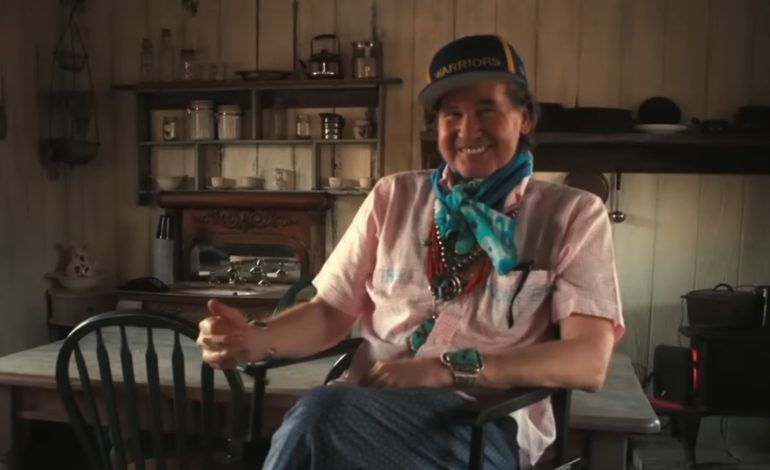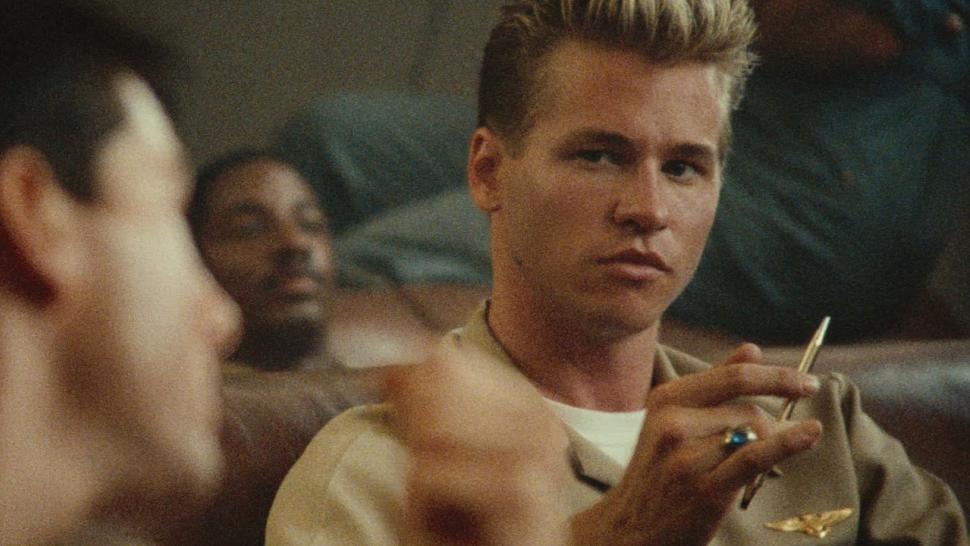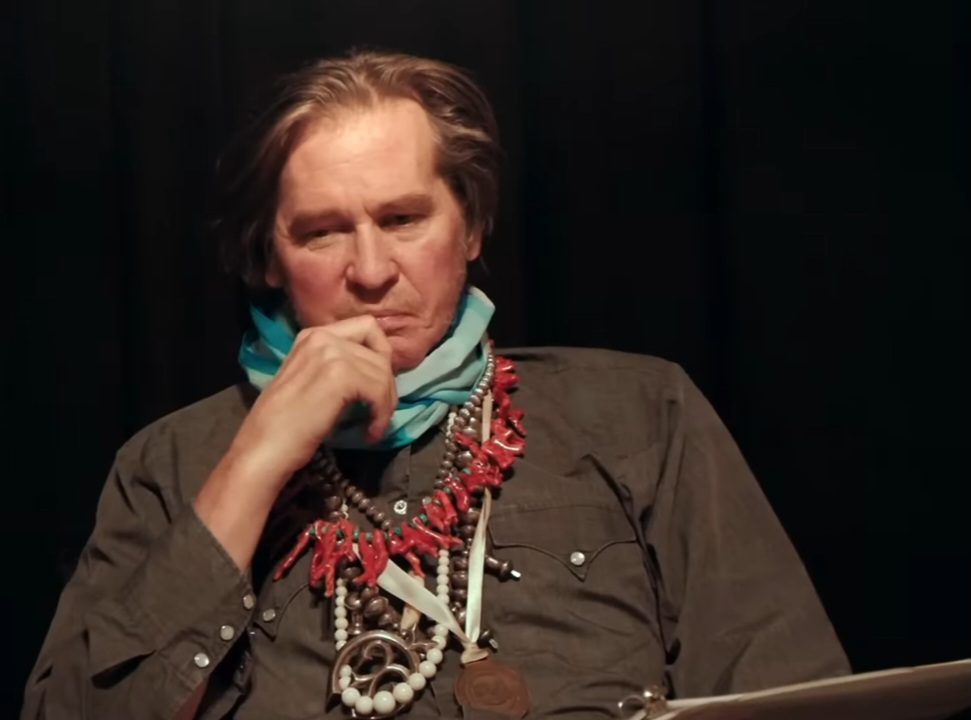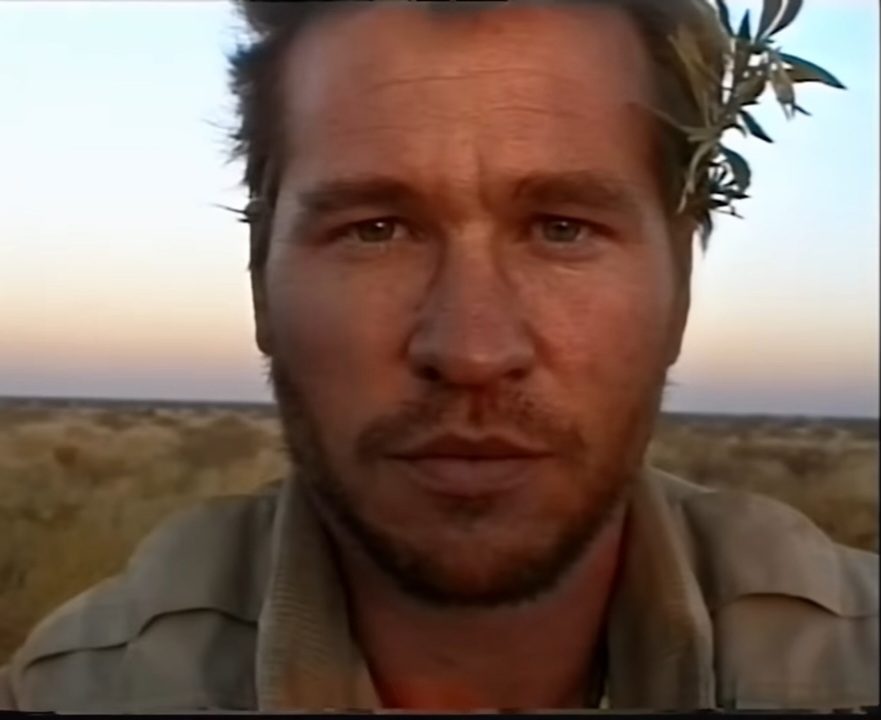

There’s a moment in Val, the 2021 documentary made from decades of his own home footage, where Val Kilmer says, “It’s not about acting. It’s about becoming.” It’s a quiet line, delivered without pretense, but it settles into the film—and his legacy—with weight. That sentiment, more than anything, speaks to the way Kilmer approached his work. He wasn’t chasing stardom, although it found him. He wasn’t trying to entertain, though he often did. He was trying to inhabit something, to understand it from the inside out. Kilmer was, on paper, a classic leading man: sharp-featured, charismatic, and capable of carrying major films. But his instincts often pulled him elsewhere. He gravitated toward characters with contradiction—restless, wounded, searching. He could step into a role like Doc Holliday in Tombstone or Chris Shiherlis in Heat and deliver the kind of performance that lives on for decades, the kind that fans quote and revisit. But to focus only on those roles is to miss the fuller story. His career was not built on hits, but on choices. Some of them strange, some of them quiet, some of them buried under the noise of a louder industry. And as the years went on, that guardedness became more transparent, especially in the wake of illness and the loss of his voice. In those later chapters, through his writing, his artwork, and ultimately through Val, he revealed a man deeply reflective about his life and career.


Val Kilmer’s beginnings were less dramatic than the path he would eventually take. Born in Los Angeles to a real estate developer father and an aerospace-connected mother, he grew up in the long shadow of California ambition. After his parents divorced and his younger brother passed away in childhood, there was a quiet grief shaping his early life, something unsaid that seemed to echo later in his work. At 17, he became the youngest student ever accepted to Juilliard, where he immersed himself in classical training, devouring Shakespeare and the craft of acting. And yet, his screen debut didn’t reflect the weight of that education. It started in comedy. Top Secret! and Real Genius introduced Kilmer to audiences not as a dramatic force, but as someone who could turn a deadpan into an art form. He wasn’t just funny—he was sharp, with a timing that felt too exact for someone new to the game. It was an unexpected beginning for an actor so often remembered for intensity, but that range was already showing itself. However, the idea of type never seemed to interest him. Instead, he moved between tones like someone flipping pages—curious, restless, absorbing whatever the role required. His comedy work wasn’t a sidetrack from a more serious career—it was part of it. The man who would one day play Jim Morrison, Doc Holliday, and Batman began his film career playing goofballs and geniuses. He was a chameleon from the start—not out of indecision, but because he understood early on that transformation was the point.
Top Gun (1986) turned Val Kilmer into a star, even if he didn’t ask for it. Cast as Tom “Iceman” Kazansky, the elite Navy pilot with a jaw like steel and a voice that never raised itself unnecessarily, Kilmer played the perfect foil to Tom Cruise’s Maverick. While Cruise’s performance burned hot, Kilmer’s stayed cool—controlled, composed, almost smug—but with something unreadable simmering underneath. Off screen, the dynamic between Kilmer and Cruise mirrored their characters to some extent—professional, but competitive. He had no interest in playing along with Hollywood’s game unless the work justified it, and even then, it had to matter to him. Over time, Kilmer developed a reputation for being “difficult,” a label that followed him throughout the ‘90s. But beneath that was something simpler: he took the work seriously. On films like Batman Forever and The Island of Dr. Moreau, that attitude led to tension behind the scenes. He wanted the characters to feel real, even in big-budget films full of special effects and costumes. Playing Batman, for example, wasn’t just a role to him—it was something he wanted to explore on a deeper level. Still, no matter what was happening behind the camera, Kilmer’s performances stayed strong. He didn’t fake it. Whether he was in a massive franchise or a strange indie project, he gave everything to the role. Kilmer may not have played the Hollywood game the usual way, but he always showed up for the work—and the work speaks for itself.
Val Kilmer’s ambition as an artist went far beyond being a movie star. One of the clearest examples of this was his performance as Jim Morrison in The Doors (1991). It wasn’t just an impression—it was a full transformation. Kilmer studied Morrison’s voice, movements, and way of thinking until he could slip into the role completely. He sang the songs himself, captured Morrison’s wild charisma on stage, and leaned into the darker, more troubled sides of the rock icon’s personality. That kind of deep immersion would become a pattern throughout his career. He didn’t just play parts—he lived inside them. That same drive led him back to the stage, where he took on roles that didn’t bring the same attention as his film work but meant just as much to him. He played Hamlet, arguably the most demanding role in theater, and later wrote and starred in Citizen Twain, a one-man play where he portrayed Mark Twain with both humor and gravity. Away from the spotlight, he was also a writer. His poetry and prose were unusual—often raw, personal, and a little off-center—but they revealed a side of him that fans didn’t always see on screen. He wrote with a kind of vulnerability that didn’t seek approval. For Kilmer, art wasn’t just about career—it was about expression, curiosity, and the search for meaning. Whether he was acting, writing, or painting, he was always reaching for something beyond the surface. Fame may have opened doors, but it was never the point. The real drive was artistic freedom, wherever it led him.


Though Val Kilmer often made headlines for his biggest roles, it was his work in smaller, less publicized films that showcased the depth and range that defined his career. Movies like Thunderheart, The Salton Sea, Wonderland, and Felon allowed him to explore more complex, darker characters in thrillers and character-driven dramas. He could embody both danger and vulnerability in a single glance, drawing audiences in with his ability to shift from stoic to fragile, from menacing to deeply human. These roles weren’t as widely seen or appreciated at the time, but they revealed the heart of his craft—an actor who could disappear into a character without needing the world to notice. Even then, Kilmer wasn’t afraid to embrace the absurdity of fame. His willingness to parody his own image became evident in Kiss Kiss Bang Bang (2005), where he played a gay detective in a film that poked fun at Hollywood conventions. His sharp comic timing and chemistry with Robert Downey Jr. offered a side of him that was playful, smart, and fully aware of the often ridiculous nature of the industry. Kilmer didn’t just mock his past; he leaned into it. In MacGruber (2010), he took his self-awareness to another level, playing a villain who was as much a send-up of his own action-star persona as he was a legitimate character. Whether he was playing a tormented detective or a parody of an action hero, Kilmer’s choices reflected his fearlessness as an actor. He embraced a range of roles that allowed him to both challenge and reinvent himself.
In the years that followed his career peak, Val Kilmer faced a battle that none of his previous roles had prepared him for. In 2014, he was diagnosed with throat cancer, a diagnosis that would change his life both physically and emotionally. The loss of his voice wasn’t just literal—it was a painful erasure of one of his defining tools as an actor. Kilmer retreated from the public eye and from acting, as the physical toll of the disease took its hold. The process was slow, and for a time, it seemed like his career might be over. But true to his nature, Kilmer didn’t stay away for long. It wasn’t the loud return of a star—it was quieter, more deliberate, and in many ways, more profound. In 2021, Kilmer took the bold step of sharing his story in the documentary Val. The film is a collage of personal footage, letters, and reflections, much of it filmed by Kilmer himself over the years. It allows him to speak for the first time in a long while, not through his voice, but through his own words and images. Through his own lens, we see not just an actor, but a man in search of meaning, grappling with the fame he once held and the reality he now faces. He sheds the Hollywood image, allowing us to see the man behind the roles—flawed, reflective, and more human than ever.
Val Kilmer’s legacy extends far beyond the iconic roles he played. He was admired not just for his ability to inhabit characters, but for the way he approached every part. Whether it was the quiet intensity of Iceman in Top Gun, the haunting unpredictability of Doc Holliday in Tombstone, or the vulnerability he brought to Chris Shiherlis in Heat, Kilmer’s performances were never about being the loudest or the most visible. His performances in Tombstone and Heat are often the ones most fondly remembered, but they represent only two significant chapters in a far larger tapestry of work. In Tombstone (1993), Kilmer’s portrayal of Doc Holliday became legendary—not just for his iconic lines, but for the vulnerability and self-doubt he infused into a character who might have been written off as a mere gunslinger. Kilmer made Doc both dangerous and broken, fiercely loyal yet increasingly resigned. The charisma was undeniable, but it was the underlying pain that made the performance so memorable. A similar sense of vulnerability defined his role in Heat (1995), where he played Chris Shiherlis, a criminal torn between loyalty to his crew and the possibility of a better life. In a film full of powerhouse performances, Kilmer’s quiet intensity and inner conflict stood out. It was a role that allowed him to be both strong and fragile, an emotional rollercoaster without overt gestures or dialogue. While these two roles may define Kilmer’s place in film history, his legacy is about more than just those two standout performances. They are a part of a larger body of work that spanned genres and styles, proving that Kilmer was more than just an action hero or a Western icon.


In the end, Val Kilmer’s legacy doesn’t fit neatly into a single narrative. He was an actor, yes, but also a painter, a writer, a man who sought deeper truths through every form of expression available to him. He gave himself over to art in every form, even as his body changed, even as his voice slipped away. There was no final act, no dramatic curtain call. Just the continuation of a restless creative spirit that never stopped asking questions. And through it all, he never stopped creating. “I’ve lived a magical life,” he wrote in I’m Your Huckleberry, “and I’ve had more than my fair share of adventure.”
